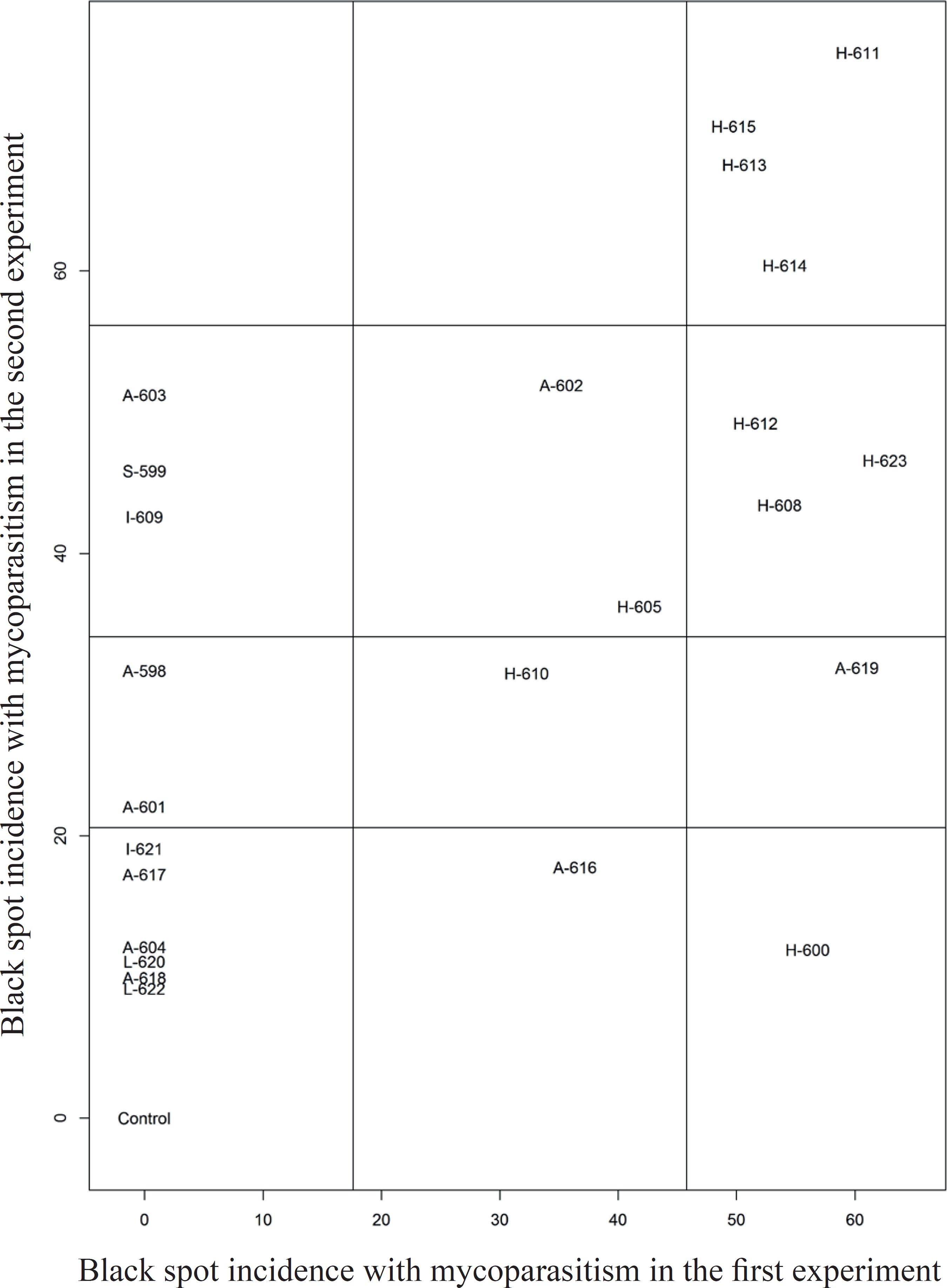ABSTRACT
The use of fungicides is the main control measure against the black-spot disease of papaya. The biological control is an alternative to that, being the selection of mycoparasitic fungi the first step in programs aiming at this kind of control. This study aimed to obtain and select fungi with potential to the biocontrol of the black spot disease of papaya. For this purpose, 24 isolates were collected from different regions and pathosystems, and then identified morphologically and by the ITS region sequencing. In order to evaluate the mycoparasite potential, two assessments, in a randomized block design, with three replications, were carried out in a shadehouse, being the obtained isolates inoculated on papaya leaves with black spot lesions. The average time for the appearance of mycoparasitism signs and the incidence of mycoparasitized black spot lesions were evaluated. Of the 24 isolates obtained, ten were from Hansfordia pulvinata, two from Lecanicillium lecaniium, two from Simplicillium lanossoniveum, one from Sarocladium implicatum and nine from Acremonium spp. A wide variability, concerning the mycoparasitism on black spot lesions, was observed, especially for the isolates H-611, H-613, H-614 and H-615, which showed the highest colonization averages. The results demonstrate that H. pulvinata has a great potential to be used as a biocontrol agent against Asperisporium caricae.
KEYWORDS:
Carica papaya; Asperisporium caricae; Acremonium spp.; Hansfordia pulvinata




